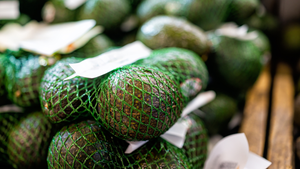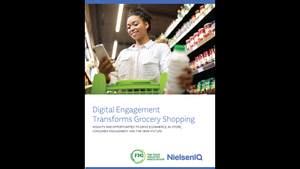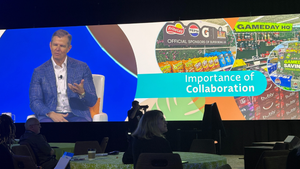A forum for contributed pieces from industry thought leaders, retailers, wholesalers and manufacturers. The views expressed are those of the authors.
Why has seafood per capita consumption been flat since 2007?Why has seafood per capita consumption been flat since 2007?
Seafood has stalled and I don’t see it improving in the foreseeable future…

 Joseph Sabbagh is the president of Sax Maritime Associates, which has been offering consulting services to those invested or considering investing in the seafood industry since 1985. Clients have included significant retailers, restaurants, producers, distributors, private equity, and environmental concerns.
Joseph Sabbagh is the president of Sax Maritime Associates, which has been offering consulting services to those invested or considering investing in the seafood industry since 1985. Clients have included significant retailers, restaurants, producers, distributors, private equity, and environmental concerns.
I have been behind retail seafood counters and interacted with stakeholders and consumers in over 40 states and five countries since 1979. Those interactions have given me a great respect for the U.S. food industry in general and the grocery industry in particular. I can’t name any country that provides its population with a higher level of quality, variety, consistency, and value than the dedicated members of our food industry.
All living organisms have a basic need for nourishment to survive. We humans have expanded that need into an infinite number of delicious wants. The food producers and grocers have done a great job at satisfying those needs and wants. Running a grocery store is not easy even in the best of times and for some their seafood departments can be especially challenging. Seafood consumption has been just about flat since 2007 and I don’t see that improving in the foreseeable future.
My reasoning is based on long term per capita consumption (PCC) numbers as well as my observations and conversations with industry professionals and consumers. Some grocers may want to reevaluate their seafood programs based on the current market conditions. My hope is my insights will provide grocers a different perspective on their seafood departments in order to meet their future needs for the category.
Some question PCC calculations but I think they have as much value as any other quantitative seafood data. Here is a report compiled by the National Marine Fisheries Service in 2020 for 1980 to 2018. (see page 16)
NMFS will revise data as time goes on. The numbers show that consumption rose 3.5 pounds in the 80s, 2.1 pounds in the 90s, 0.6 pounds from 2000-2009 (due to the mercury myth that remains today), and 1.2 pounds from 2010 to 2018.
In 1968, PCC was 11 pounds and in 2019 it went up to 19.2 pounds but may be revised. From 2007 to 2019 consumption went up only 8 ounces. I caution clients and anyone who will listen not to put much value in 2020 to 2022 seafood data due to the pandemic.
I do think there are two factors to remember from those years. The first is that it took a global pandemic and food service shut down to accelerate seafood sales in grocery stores. The second is that during that time more consumers tried seafood, and from the retail sales data coming out in 2023, there’s an indication that consumers may now be fished out.
So seafood had a good run from 1968 to 2007, but has since slowed. Why? In my opinion, five reasons:
Consumers moving away from animal protein in general
A natural leveling of demand
Price vs other animal proteins
The seafood industries inability to counter the false narratives on mercury, aquaculture, overfishing, sustainability, and other topics
Self-inflicted negative issues the industry has created
I will expand upon the reasons above in future posts. I am certain none of them were created or can be controlled by the grocery industry. What you can create and control is how your company responds to the realities of the current seafood market. Seafood retail programs are as diverse as our country’s consumers.
How grocers use seafood can vary as well — some are just focused on margins, others marketing, and most lean into a combination of the two. There are some exceptional seafood programs in the U.S. and I expect that to continue. In this Supermarket News seafood story, I mention a few merchandising changes grocers may want to consider. In my next post, I’ll dive even deeper into the details of those changes. Thanks for reading.
**
Seafood enjoyed a good run at the grocery between the years 1968 to 2007, but sales have trailed off over the last 15-plus years. Our columnist notes that this is partly because shoppers are simply buying less animal protein in general. What other reasons do you see for a decline in seafood sales?
Let us know in the comments below, or email the SN staff at [email protected].
About the Author
You May Also Like






